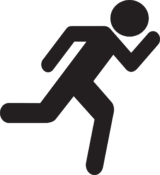10 Essential Steps for Recovering from a Head Injury: A Comprehensive Guide
Head injuries can be life-altering and recovering from them is a crucial process that requires careful attention and care. Whether you or a loved one is dealing with a head injury, understanding the steps to recovery can make a significant difference in the healing process. This comprehensive guide outlines ten essential steps to help you or someone you care about recover effectively from a head injury.
Understanding Head Injuries
Head injuries can range from mild concussions to severe traumatic brain injuries (TBIs). According to the Centers for Disease Control and Prevention, approximately 2.8 million TBI-related emergency department visits, hospitalizations, and deaths occur annually in the United States. It’s crucial to recognize the severity of the injury to ensure appropriate care and recovery.
Types of Head Injuries
Head injuries are generally categorized into the following types:
- Concussion: A mild form of TBI that can result in temporary loss of brain function.
- Contusion: A bruise on the brain caused by a direct blow to the head.
- Skull Fracture: A break in one or more bones of the skull.
- Hematoma: A collection of blood outside of blood vessels, which can lead to increased pressure on the brain.
Step 1: Seek Immediate Medical Attention
The first and most critical step following a head injury is to seek immediate medical attention. Even if symptoms seem mild, only a healthcare professional can properly assess the severity of the injury. Delayed treatment can result in complications, so it is vital to get evaluated as soon as possible.
Step 2: Follow Medical Advice and Treatment Plans
Once a healthcare provider has evaluated the injury, adhering to their treatment plan is essential. This may include medication, rest, and other therapies to aid recovery. Compliance with medical advice can significantly affect the speed and success of recovery.
Step 3: Rest and Recuperate
Rest is paramount for recovery from a head injury. The brain needs time to heal, and overexertion can delay recovery or worsen symptoms. The American Association of Neurological Surgeons recommends limiting physical and cognitive activities as advised by your healthcare professional.
Creating a Restful Environment
Ensure a comfortable and quiet environment to promote optimal rest. Minimize screen time and avoid activities that require intense concentration. Consider using blackout curtains and sound machines to create an ideal setting for recovery.
Step 4: Gradually Reintroduce Activities
As symptoms improve, slowly reintroduce daily activities. Start with light activities, such as short walks or gentle stretching, and gradually increase intensity based on your comfort level. Always consult with your healthcare provider before resuming any strenuous activities.
Step 5: Monitor Symptoms Closely
Keeping track of symptoms is crucial for understanding the recovery progress. Note any changes in headaches, dizziness, or cognitive function, and report them to your healthcare provider. Promptly addressing any concerning symptoms can prevent complications.
Step 6: Engage in Cognitive Rehabilitation
Cognitive rehabilitation may be beneficial for individuals experiencing memory loss or concentration issues post-injury. This therapy involves exercises designed to improve cognitive function, which can help in regaining mental capabilities and improving quality of life.
Step 7: Maintain a Healthy Diet
Nutrition plays a vital role in recovery. Consuming a balanced diet rich in vitamins, minerals, and antioxidants can support brain health. Foods like fatty fish, berries, and leafy greens are particularly beneficial. Hydration is equally important, so ensure adequate water intake.
Step 8: Seek Support and Counseling
Recovering from a head injury can be mentally and emotionally challenging. Support groups and counseling can offer invaluable emotional support and coping strategies. The Brain Injury Association of America provides resources and support networks for individuals and families affected by brain injuries.
Step 9: Avoid Alcohol and Drug Use
During recovery, it’s crucial to avoid alcohol and non-prescribed drugs as they can interfere with the healing process and potentially worsen symptoms. Discuss any concerns about medication or substance use with your healthcare provider.
Step 10: Plan for a Safe Return to Daily Life
As recovery progresses, plan for a safe transition back to daily activities. This may include modifications to your home or work environment to accommodate any lingering symptoms. Gradually increase responsibilities and continue to prioritize health and well-being.
Conclusion
Recovering from a head injury is a journey that requires patience, support, and dedication. By following these ten essential steps, individuals can optimize their recovery and improve their quality of life. Remember, every recovery is unique, and consulting with healthcare professionals throughout the process is crucial for a successful outcome.
For more information and resources on head injury recovery, visit the CDC’s Traumatic Brain Injury page or the Brain Injury Association of America.

